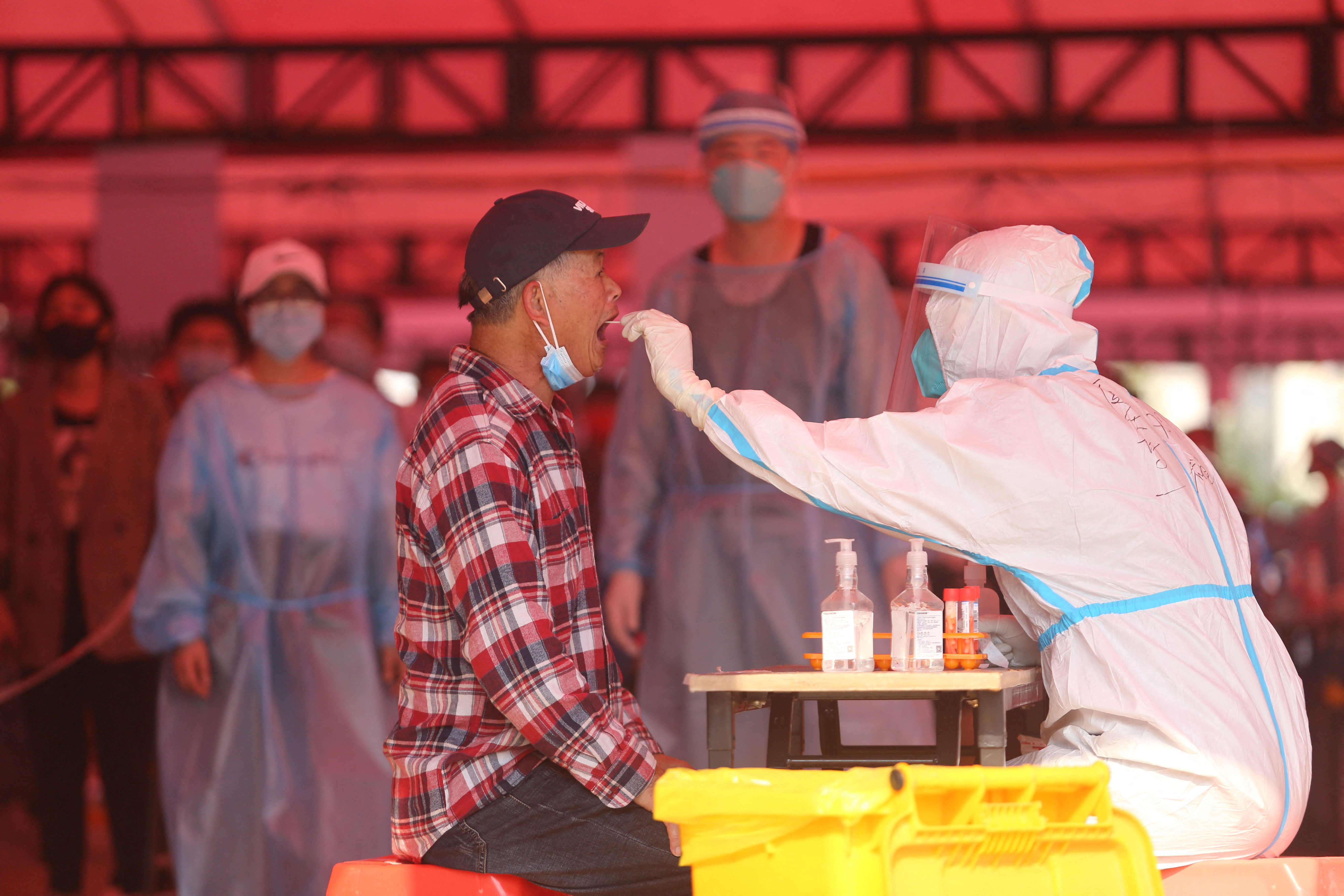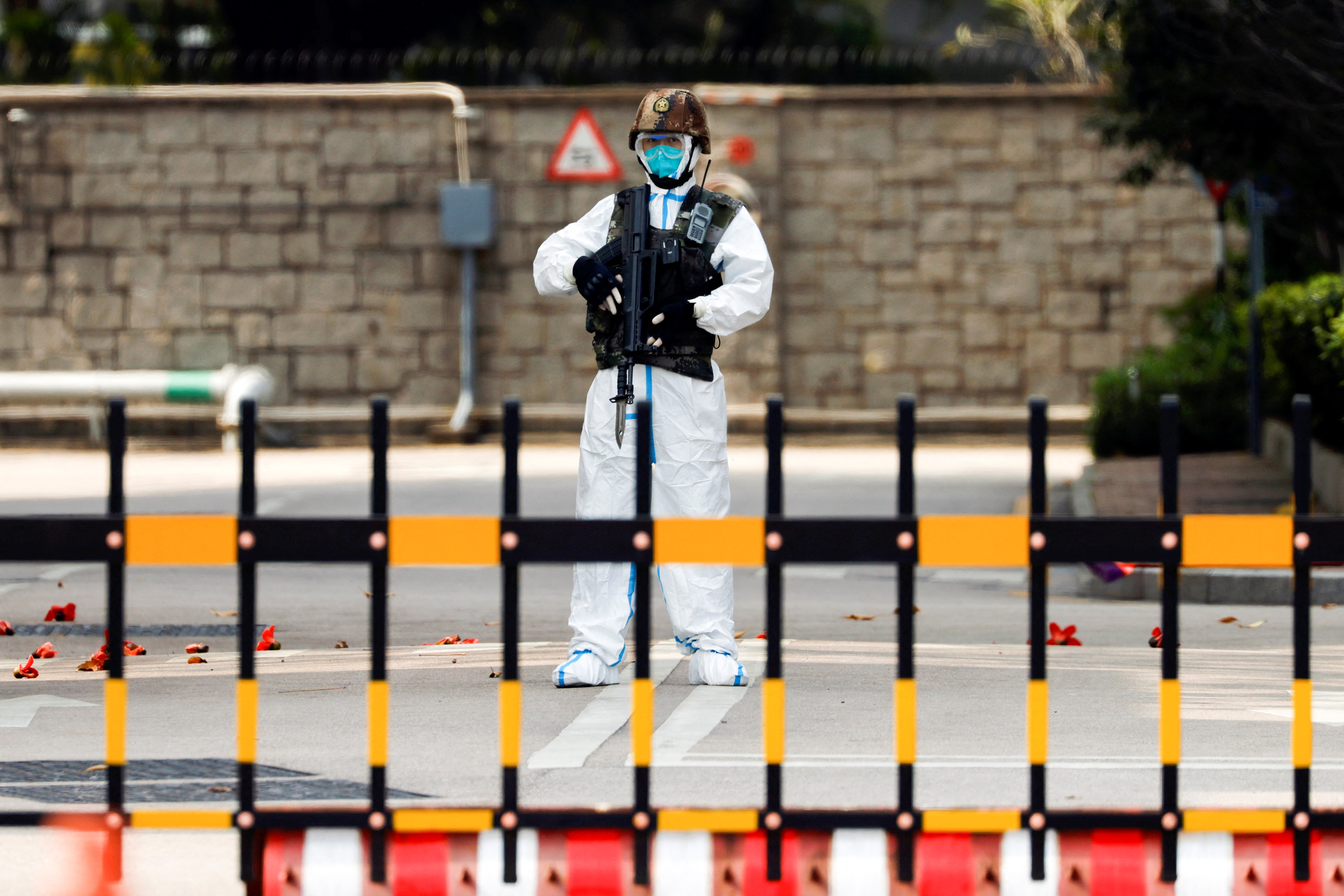:quality(85)/cloudfront-us-east-1.images.arcpublishing.com/infobae/H75KKMXLO5HWXMZGG7P2U7LINM.jpg 420w)
China is facing an unprecedented explosion of COVID cases since the beginning of the pandemic in Wuhan in 2020, with outbreaks in the northeast of the country and in the metropolises of Shenzhen and Shanghai that local authorities are trying to stop by applying the strict zero-covid policy.
The Asian country today announced the detection of 3,602 local cases of covid on its mainland, of which more than 3,000 were located in the northeastern province of Jilin, bordering Russia and North Korea.
Since Monday, its 26 million inhabitants have been prohibited from leaving the province, a guideline that has not been applied in China since the inhabitants of the central province of Hubei, whose capital is Wuhan, were banned from leaving during the first outbreak of the pandemic in early 2020. The new lockdown is the largest in force, surpassing the one already in force in Shenzhen, with 17 million people.
“SERIOUS AND COMPLICATED” SITUATION
The province, the size of Albania, faces a “serious and complicated situation” according to local health authorities, and has already completed the construction of five temporary hospitals with capacity for 22,880 beds while others are still under construction.
Despite the fact that the province has not recorded any deaths for months and the vast majority of those infected in this reoutbreak (3,059 of the 3,076 cases detected yesterday) show “mild symptoms” and none are serious, the Chinese strategy of “dynamic zero covid” provides for the isolation of all those infected and their close contacts in facilities which add pressure to the hospital system at the sites where outbreaks occur.

7,000 soldiers have been mobilized to participate in pandemic prevention efforts, which include, as has been customary in China throughout the pandemic, massive PCR testing of the population wherever a case is detected.
However, the governor of the province, Han Jun, was confident and promised on Monday that the province, where some cities such as Changchun (capital) and Jilin are already totally or partially confined, will manage to “cut the chain of social infections” within a week, which means that transmission will only be detected in the insulation facilities.
SHENZHEN AND SHANGHAI AFFECTED
The southern city of Shenzhen, with 17 million inhabitants, decreed last weekend the cancellation of public transport services and movements in neighborhoods have been restricted following a regrowth that leaves 551 active cases in the city, according to the latest official data.
The city, which borders Hong Kong - which in turn is dealing with a seventh wave of covid that has already caused more than 2,800 deaths since March 1 - also announced the launch of a massive PCR test campaign that will collect samples three times from all the city's inhabitants.
The outbreak has also impacted the industrial capacity of Shenzhen, located in the area of China known as the “factory of the world”: Taiwanese technology company Foxconn, the world's largest iPhone assembler, announced Monday the suspension of operations in its factories and restrictions have led to sharp drops in the stock markets. Hong Kong and mainland China.

For its part, Shanghai, with 671 active cases, has not declared a total lockdown, but many residents of affected neighborhoods have been banned from going outside and all kindergartens and primary and secondary schools have announced that classes will continue online.
FEW CHANGES TO THE MANUAL
Faced with the largest covid outbreak recorded since the original in Wuhan, China has barely changed its strategy of “zero dynamic covid” which includes the closure of borders for non-residents and mass testing of PCR and restrictions on movement wherever a case is detected.
Last week, the country approved the use of antigen tests to “complement” the existing strategy, of which the province of Jilin, the currently hardest hit, has placed an order for 12 million units.
These tests, “cheaper” according to consultancy Trivium, could serve the Chinese authorities to “accelerate large-scale testing campaigns” and, in the long term, their availability could “provide China with a path to live with the virus.”
However, both political and health voices in the Asian country have recently advocated the appropriateness of China's harsh strategy despite the fact that some experts had hinted at a change in policy.

Chinese Vice President Sun Chunlan, visiting Jilin province, called on authorities to “efforts in PCR testing campaigns and quarantines” to stop “all infections in the community” and reiterated the need to isolate asymptomatic cases.
For his part, epidemiologist Zhang Wenhong said that “this is not the time to discuss the zero covid policy” but to “use this period as an opportunity to design wiser, more comprehensive and sustainable anti-pandemic strategies.”
Since the start of the pandemic, 120,504 people have been infected in the country and 4,636 have died, according to China's official accounts.
(with information from EFE)
KEEP READING:
